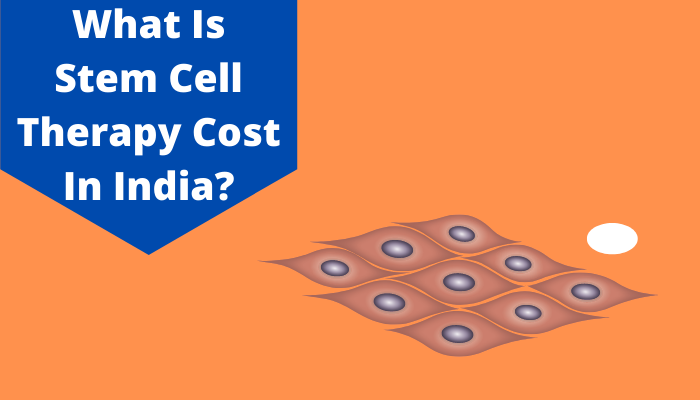What Are The Early Symptoms of Black, White & Yellow Fungus?
The novel coronavirus has raised quite the panic across the globe. However, its most prominent contributions in recent times have been the black, white, and yellow fungus.
In recent times, medical professionals and scientists have run tests to discover that Black Fungus is most likely to infect those who suffer from diabetes or regularly use steroids. It has already been categorized as a potential epidemic. The White Fungus is also quite dangerous and demonstrates similar symptoms as that of covid-19. And then there is the white yellow fungus which happens to be the most treacherous of the trio. It affects patients who are in recovery from covid-19.
If you experience any of the symptoms that indicate an infection of black, white, or yellow fungus, then seek medical attention at the earliest.
What is black fungus?
Mucormycosis, commonly referred to as Black Fungus is a new-fangled disease accompanying the novel coronavirus during this pandemic. It is a considerably hazardous phenomenon and is divided into three types based on the areas of the body that it affects:
The first type acts on the paranasal sinuses and nasal cavity. In most cases, it is known to cause blindness before it transits to the brain.
The second type is one that affects the lungs, thus resulting in Pulmonary Mucormycosis.
The third affects the GI tracts and causes Gastrointestinal Mucormycosis.
The reason that Black Fungus is considered to be so dangerous is that the fungi tend to enter blood vessels around the infected area. They can easily damage the blood vessels thus killing the cells around them, also known as Necrosis.
The Black Fungus derives its name from the color of the tissues that it successfully damages.
What are the symptoms of Black Fungus?
For patients who have recently suffered an attack by the novel coronavirus, it is pivotal to check for the following signs within the next one or two months. Even more so if the patient happens to suffer from diabetes or is given steroids during the treatment of covid-19 or otherwise.
- Facial pain
- Blocking in the nasal cavities
- ● Nasal discharges
- Bleeding in unprecedented situations
- Numbness in muscles
- Swelling in muscles
- The blurring of the optic nerves
- Eyes watering constantly
- Double vision
Since the Black Fungus can affect three distinctly segregated regions of the body, keep an eye out for the symptoms of pain, numbness, and swelling throughout the system. When diagnosed at the earliest, Black Fungus can still be treated to save the person’s life.
What are the possible modes of treatment if a patient is diagnosed with Black Fungus?
If you observe any of the signs of black fungus, do not delay consulting a doctor for an MRI.
Commonly, a patient who has developed Black Fungus will likely receive doses of Posaconazole and Amphotericin B to treat the fungal infection. If the Black Fungus is diagnosed at an early stage and has yet not spread to multiple vital organs, the doctor can perform surgery to remove the infection from the affected area.
Thus, it is important to identify the symptoms and seek treatment as early as possible.
What is White Fungus?
The White Fungus is a much tamer competitor to the Black Fungus, although equally treacherous in nature. The fungus in itself is not contagious, i.e., an infected person is not likely to spread the infection.
However, the moulds of White Fungus may be inhaled. If so, the fungi can pulsate to important organs where they set up camp and grow. Thus the immune system is compromised resulting in further complications.
Although the development of White Fungus, unlike Black Fungus, has nothing to do with diabetes per se, Diabetics are highly vulnerable. Diabetes tends to cultivate several bacterial and fungal infections as a by-product of the disorder itself. The low immunity coupled with the additional disorders creates an inviting environment to fester infections.
Therefore, even if a diabetic has not suffered from covid-19, it is still best to keep a lookout for the symptoms of White fungus. The symptoms may just be an indication of Covid-19 too, so either way, the patient needs to be diagnosed and treated as soon as possible.
What are the symptoms of White Fungus?
Much like the docile fungus itself, the symptoms of White Fungus are tame, but the infection is not. They are similar to symptoms of covid-19 and the patient can be easily diagnosed with a CT scan or even an X-ray.
Keep a wary eye out for the following signs to detect White Fungus in yourself or a loved one:
- Fever
- Cough
- Infections
- Constant headache
- Pain in muscles or Myalgia
- Swelling in different muscles
- Dark spots on lungs in X-rays and CT scans
- GI symptoms such as Diarrhea
- Reduction of oxygen levels in the body
Since the symptoms of White Fungus are similar to Covid-19, it is likely that authorities may end up running tests to diagnose the novel coronavirus. However, if you experience these symptoms, insist upon a CT scan or X-ray as a precautionary measure to diagnose and treat White Fungus in its early stages.
What are the possible modes of treatment if a patient is diagnosed with White Fungus?
As we have already stated, White Fungus is comparatively docile than Black and Yellow Fungus. It can be easily diagnosed through a CT scan or X-ray as it is quite primitive yet prominent in nature.
If a patient inhales, contracts, or develops White Fungus, it can be treated with simple doses of antifungal medication.
What is Yellow Fungus?
Aspergillus, or as it is commonly referred to as Yellow Fungus is a new Fungi development that affects people recouping from Covid-19. Among the trio of new fungal infections, the Yellow Fungus is by far the most fatal. Unlike its companions, Yellow Fungus tends to develop and grow internally with little to no symptoms.
Due to its characteristic of delayed symptoms, it is increasingly difficult to diagnose Yellow Fungus till it is too late. It is pivotal to identify and treat the fungi at an early stage to control the spread and Yellow Fungus tends to circumvent that facility.
The Yellow Fungus tends to affect anything from paranasal sinuses all the way down to the legs, infecting vital organs along the way. Thus, if you are recovering from covid-19, it is important that you keep an eye out for the symptoms of Yellow Fungus. They may not seem as prominent as people tend to mistake them as symptoms of other minor diseases or the recovery process. However, if you notice any of the signs, do not hesitate to call the doctor.
What are the symptoms of Yellow Fungus?
Even though the symptoms of Yellow Fungus are somewhat subtle and submissive, you must actively look for the following indications in order to diagnose it at an early stage:
- Sunken eyes
- Loss of appetite
- Reduced metabolism
- Sudden weight loss
- Hypersensitivity to pneumonia
- Pneumonia that develops a fungal wall
- Pneumonia that develops cavities
- Pneumonia that develops both fungal walls and cavities
- Fatigue
Since people recovering from Covid-19 are at a high risk of developing the Yellow Fungus, we cannot stress enough how important it is that you observe them for the symptoms we have mentioned above. The faster you recognize the signs, the quicker the victim can seek diagnosis and treatment which provides them with a fighting chance against the fatal fungal infection.
What are the possible modes of treatment if a patient is diagnosed with Yellow Fungus?
If you observe symptoms of Yellow Fungus in a loved one or yourself, do not waste any time running to the hospital. The infection spreads unnoticed for the most part, therefore, it has to be diagnosed quickly in order to be treated with maximum effectiveness.
The only process of treatment, known to man so far, for Yellow Fungus is administering injections of Amphotericin B. It is an antifungal drug that is also commonly used on patients diagnosed with black Fungus. The best course of action in cases of Yellow Fungus is to control the spread of the infection and localize it as much as possible.
Conclusion
There is plenty to dread about when it comes to the novel coronavirus. Add Black, White, and Yellow Fungal infections to the mix, and the rising levels of panic become inevitable.
We are not trying to frighten you. ‘To be forewarned is to be forearmed.’
When you know what to expect and the signs which you must watch out for, it makes it easier to identify the symptoms, diagnose the problem, and seek professional medical help at the earliest.
Keep in mind that more often than not, fungal infections are actually a result of poor hygiene. Therefore, whether you or your loved ones are recovering from covid-19 or not, always keep up with your hygiene. Sanitize your home and all surrounding regions, expel moisture and humidity from your home, and most importantly, practice good and effective personal hygiene at all times.




























